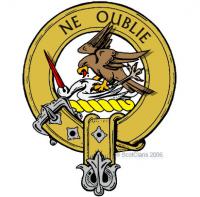
Clan Graham
Groups
Clan Graham People
James Graham (1745-94)
It is not clear if devout vegetarian Graham ever graduated from his medical studies in Edinburgh, but he made a living for himself effecting remedies and selling medicines across Britain and America. He enjoyed publicity, which was just as well as he was imprisoned for fraud on a number of occasions.
He also earned himself a mention in the “Dictionary of National Biography†as ‘a quack and possibly a madman’.
James Gillespie Graham (1776-1855)
Dunblane-born James Gillespie was the Clerk of Works on Skye when his career as an architect took off with a commission for the County Buildings of Cupar.
He took the name Graham when he married heiress Margaret Graham in 1810. Among the buildings he went on to design were St John’s Tollbooth and St Mary’s Church in Edinburgh, and Taymouth Castle in Perthshire.
Thomas Graham (1805-69)
A student of Glasgow University at fourteen years of age, Graham went on to be a Professor of Chemistry there, advancing his research into arsenates and phosphates. He left Glasgow for University College London, and was to become Master of the Mint.
He defined the law of gas diffusion and the fundamentals of colloid chemistry, for which his statue was raised in Glasgow’s George Square.
Kenneth Grahame (1859-1932)
Claiming descent from Robert the Bruce, Grahame was the son of an Edinburgh advocate and studied at St Edward’s College, Oxford. In 1879 he joined the Bank of England as a clerk and by 1898 became Secretary of the Bank.
He is best remembered however for his writing, which he began in 1886. He contributed to the “National Observer†and the “Yellow Bookâ€. In 1908 he retired from the bank for health reasons and published his most popular work, “The Wind in the Willowsâ€, which he had written for his son.
It is not clear if devout vegetarian Graham ever graduated from his medical studies in Edinburgh, but he made a living for himself effecting remedies and selling medicines across Britain and America. He enjoyed publicity, which was just as well as he was imprisoned for fraud on a number of occasions.
He also earned himself a mention in the “Dictionary of National Biography†as ‘a quack and possibly a madman’.
James Gillespie Graham (1776-1855)
Dunblane-born James Gillespie was the Clerk of Works on Skye when his career as an architect took off with a commission for the County Buildings of Cupar.
He took the name Graham when he married heiress Margaret Graham in 1810. Among the buildings he went on to design were St John’s Tollbooth and St Mary’s Church in Edinburgh, and Taymouth Castle in Perthshire.
Thomas Graham (1805-69)
A student of Glasgow University at fourteen years of age, Graham went on to be a Professor of Chemistry there, advancing his research into arsenates and phosphates. He left Glasgow for University College London, and was to become Master of the Mint.
He defined the law of gas diffusion and the fundamentals of colloid chemistry, for which his statue was raised in Glasgow’s George Square.
Kenneth Grahame (1859-1932)
Claiming descent from Robert the Bruce, Grahame was the son of an Edinburgh advocate and studied at St Edward’s College, Oxford. In 1879 he joined the Bank of England as a clerk and by 1898 became Secretary of the Bank.
He is best remembered however for his writing, which he began in 1886. He contributed to the “National Observer†and the “Yellow Bookâ€. In 1908 he retired from the bank for health reasons and published his most popular work, “The Wind in the Willowsâ€, which he had written for his son.







